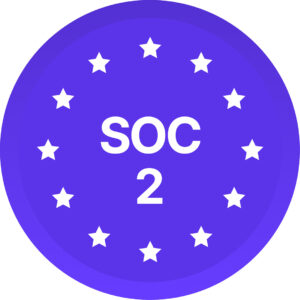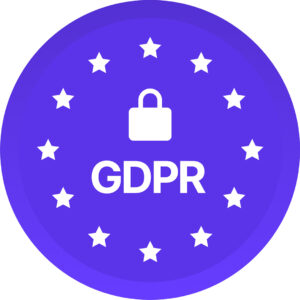Welcome to the second instalment of our three-part series: Achieving a More Inclusive Future: The Ultimate Inclusion, Diversity, Equity, and Accessibility Goals. The first installment, Benchmarking Your Inclusion, Diversity, Equity, and Accessibility Progress, discussed the critical role of Inclusion, Diversity, Equity, and Accessibility benchmarks and their use in organizations. We discussed the necessary role of internal benchmarking as a catalyst for meaningful organizational change, highlighting the Global Diversity, Equity, and Inclusion Benchmarks Standards (GDEIB) from The Centre for Global Inclusion as an invaluable resource. We also explored how firms like Diversio can assist organizations in establishing tailored internal benchmarks and provide continuous insights for improvement. The unique strength of internal benchmarking lies in its capacity for customized, real-time evaluations, which enhance employee engagement and drive broader societal impact—ranging from improved employee well-being to fostering innovation.
The second part of the series, examines what it truly means to set ambitious yet achievable goals for your organization. From talent acquisition and leadership development to creating an inclusive culture, this section will provide goals for organizations to consider.
Achieving a More Inclusive Future: The Ultimate Inclusion, Diversity, Equity, and Accessibility Goals
Understanding DEI: A Common Language
Organizations can play a pivotal role in a rapidly globalizing world that strives for unity in inclusion, diversity, equity, and accessibility. Let’s ensure we are starting from the same understanding of these terms. For this discussion, we’ll use these definitions to understand DEI:
- Inclusion: Embracing Everyone in the Circle. Inclusion involves more than just making people feel welcome; it is a mindful effort to ensure that everyone feels valued, respected and able to contribute to their fullest potential in all facets of an organization.
- Diversity: A Rich Tapestry of Ideas and People. Diversity is the mix of characteristics that make each and every one of us unique. Some of these elements may be visible, but many aspects of our diversity are invisible and may change over time. These elements include age, perceived race, gender expression, religion, hobbies, work experience, and ability.
- Equity: Ensuring Fair Opportunities for All. Equity is the assurance and actions towards providing everyone with the tailored resources they require to access opportunities, acknowledging systemic imbalances. It is the recognition that different people need different tools to succeed.
- Accessibility: Removing Barriers and Building Bridges. Accessibility is the design of products, services, or environments to access and fully utilize them by people with disabilities and those without.
The Ultimate IDEA Goals and Objectives
With a shared understanding of DEI, let’s explore some high-level goals. In keeping with the previous article, these goals have been developed around the GDEIB Standards from The Centre for Global Inclusion and sorted into its benchmarking categories of Foundational, Internal, Bridging, and External Goals. Implementing DEI goals involves strategy, setting long and short-term goals, and achieving measurable and impactful milestones. The following are possible goals and actions for an organization’s DEI development.
Foundational Goals and Actions (Strategy/Vision/Leadership/Structure)
These goals are the building blocks and lay the groundwork for your organization’s DEI initiatives:
- Clear Vision: Establish a clear and articulate vision for DEI that aligns with and is integral to the organization’s overall mission and values.
- Diverse Leadership: Promote diverse representation in leadership roles and decision-making bodies to create an equitable and inclusive organizational culture. This foundational objective should be integrated into the organization’s strategy and vision.
- Accountability: Implement systems of checks and balances to ensure ongoing inclusion, diversity, equity, and accessibility align with foundational elements like organizational leadership and structure. This may include numerical goals and thresholds. Establish committees focused on equity to guide organizational decision-making.
- Psychological Safety: Prioritize psychological safety. This is vital for the well-being of all employees and will mainly impact the internal dynamics of recruitment and team building.
Internal Goals and Actions (Recruitment, Advancement, Compensation, Benefits, and Flexibility)
Internal goals focus on the employee experience by highlighting recruitment, compensation, and general employee well-being:
- Policy Reviews: Conduct regular audits of all organizational policies to ensure they align with DEI best practices and to remove bias.
- Diversity in Recruitment: Attract diverse candidates in the recruitment process and have a diverse hiring panel in the interview process.
- Partner with academic institutions and organizations focused on underrepresented minorities to maintain a diverse pool of potential hires.
- Career Development: Create mentorship and sponsorship programs that help underrepresented groups advance within the organization.
- Universal Design: Create a work environment that is accessible, and inclusive for everyone, regardless of age, ability, or other factors.
- This extends beyond physical layout to include technology, communication, policies, and other elements that promote diversity and inclusion.
- Regular audits and checks by external agencies specialized in accessibility standards.
- Reasonable Accommodations: Provide tools or methods that cater to individual needs.
- Pay Equity: Conduct pay equity analyses and take corrective action to ensure fair compensation across all demographics.
- Flexible Work Arrangements: Implement flexible work policies sensitive to different cultural, familial, and individual needs.
Bridging Goals & Actions (Assessment, Communications, Learning, Sustainability)
This category bridges the foundation, internal, and external focuses of IDEA in organizations and the areas of assessment, learning, and communication that are necessary for their achievement:
- Cultural Competence: Develop a deep understanding of the cultural nuances that diverse groups bring into the organization. Consider conducting Intercultural Development Inventory® (“IDI”) Assessments with the decision makers in your organization.
- Intersectional Understanding: Recognize and address the intersecting nature of various social identities.
- Employee Resource Groups: Create and maintain resource groups that allow for mutual support and the propagation of minority interests.
- Ongoing Training: Implement DEI Training programs for executives and managers to lead by example and advocate for change and for employees to keep them updated on new trends, legislation, and best practices.
- Multi-modal Communication: Adapt all organizational communications to be accessible in multiple formats (e.g., Braille, large print, text-to-speech).
- Regular Surveys and Feedback: Regularly conduct culture audits to identify issues related to diversity and inclusion and formulate action plans to address them. Use analytics to identify systemic problems and assess the effectiveness of equity programs.
- Establish mechanisms for regular employee feedback on DEI initiatives and use this data for continuous improvement.
- Implement transparent mechanisms to report and track the state of inclusion in the organization through dashboards that are accessible to all employees.
- Evaluate organizational growth and development within DEI. Share metrics related to promoting accountability and showing success.
External Goals and Actions (Community, Services and Products, Marketing, Responsible Sourcing)
This category relates to how the organization offers services and products focussing on community engagement and responsible business practice:
- Stakeholder Involvement: Involve individuals with disabilities in the planning and execution phases of accessibility projects.
- Inclusive Marketing: Ensure marketing materials represent diverse communities and are stereotype-free.
- Accessible Services and Products: Design services and products that meet the needs of diverse communities, considering language, culture, and abilities.
- Responsible Sourcing: Vet suppliers and partners for DEI policies and practices.
- Community Outreach: Engage in community outreach and partnership programs to improve DEI beyond the organization’s boundaries.
Achieving a truly inclusive, diverse, equitable, and accessible environment is not a one-off task but an ongoing commitment that demands thoughtful strategy, focused execution, and relentless dedication. In our journey towards an all-encompassing DEI culture, organizations have a monumental role to play. The pathway is extensive and exhaustive, from foundational goals that shape the organizational vision and culture to internal policies that foster inclusivity among employees, bridging initiatives that connect various aspects of the business, and finally, external goals that influence how organizations impact the world.
Success in DEI is not just about ticking off boxes. It’s about an enduring, systemic change that makes diversity a reflex, not a forced initiative. It’s about transforming not just workplace practices but also the mindsets that govern these practices. This involves not just the leadership but every single individual in the organization. As we have seen, achieving this requires a clear vision, structured objectives, tactical actions, and regular monitoring. Above all, it involves authenticity in intention and action.
Conclusion
The DEI journey can be intimidating. As organizations, we can’t do this alone. That’s why consulting firms specializing in DEI, such as Diversio, are invaluable allies in this quest. Creating a tailored plan with the client, we outline the assessments useful for setting internal benchmarks. We help develop strategy, define goals, and set long-term and short-term priorities from those results. We assist in providing employee and leadership training and , we deliver ongoing support through regular monitoring and audits to ensure the DEI objectives are met and integrated into the organization’s culture.
Let’s remember that DEI is not just an initiative but a lens through which we view the world and a language through which we communicate our values. As we define our goals and set our objectives, let’s strive to integrate this language into our organizational DNA so profoundly that it becomes second nature. Ultimately, the endeavour towards achieving a more inclusive future is a collective responsibility that impacts our workplaces and society. So, let’s embark on this journey with the earnestness it deserves because the promise of a more inclusive future is a vision well worth the effort for us all.
This blog was originally published by Diversio EDU (formerly CCDI Consulting) in September 2023.
Our newsletter and blogs feature personal opinions and diverse viewpoints. We aim to create a safe space for our team to share their perspectives on diversity and inclusion. Please note that individual articles may not align with every reader’s view or comprehensively cover a topic. We appreciate the diversity of opinions and respect our team’s contributions.

